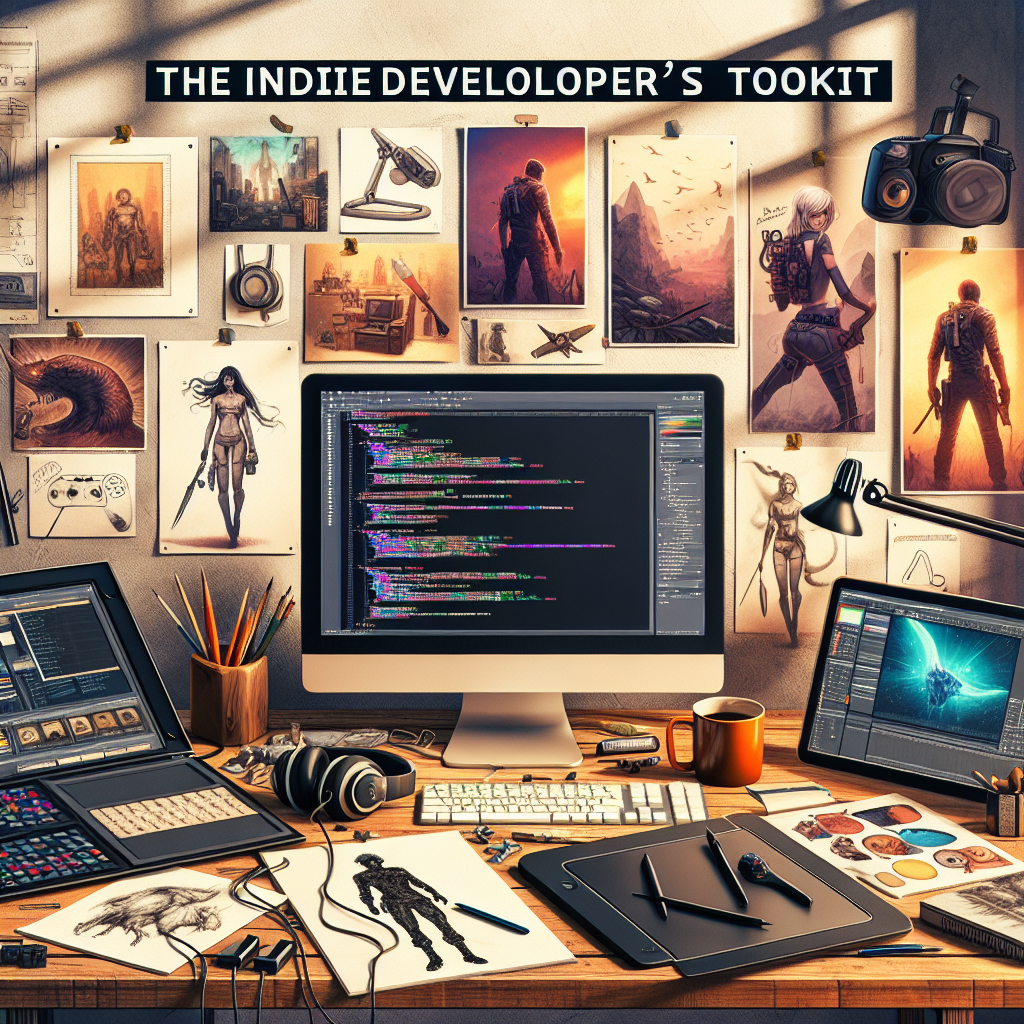The Indie Developer’s Toolkit: Essential Tips for Game Creation
The world of indie game development is vibrant and constantly evolving. With technological advancements and a growing community of creators, there’s never been a better time for aspiring game developers to bring their ideas to life. However, navigating the complexities of game creation can be daunting. This article explores essential tips and tools that every indie developer should consider, forming the backbone of an effective game development toolkit.
1. Conceptualization: Start with a Solid Idea
The foundation of any successful game is a compelling concept. Before diving into development, spend time brainstorming and refining your idea. Consider the following:
- Genre and Mechanics: Define what type of game you want to create—platformer, RPG, puzzle, etc.—and what core mechanics will engage your players.
- Target Audience: Understand who you’re creating your game for. Tailoring your game experience to a specific demographic can enhance engagement and help you focus your efforts.
- Unique Selling Point: Identify what makes your game different from others. Whether it’s a unique art style, an innovative gameplay mechanic, or an engaging story, having a distinct hook is crucial.
2. Choose the Right Tools and Software
The tools you choose can significantly impact your development process and the final product. Here are some indispensable software options:
-
Game Engines: Platforms like Unity and Unreal Engine are popular for their robust features and community support. Unity is great for 2D and 3D games, while Unreal excels in high-fidelity graphics and immersive environments. For simpler projects, engines like Godot or Construct may suit your needs.
-
Art and Animation: Consider tools like Aseprite for pixel art, Blender for 3D modeling and animations, and Adobe Creative Suite for graphic design. Each of these tools can help you create visually engaging assets for your game.
- Sound Design: Audio is vital for immersing players in your world. Tools such as Audacity for sound editing and Bfxr for retro sound effects can enhance your audio experience. For more comprehensive music composition, consider FL Studio or GarageBand.
3. Embrace Prototyping
Before committing to a full-scale development process, create a prototype of your game. A prototype allows you to experiment with gameplay mechanics and interfaces without investing significant time or resources.
- Rapid Iteration: Use prototypes to test different gameplay elements and concepts. Gather feedback from peers and potential users to refine your idea further.
- Focus on Core Mechanics: Ensure that your prototype highlights the most critical mechanics of your game. It’s better to have a polished core experience than to spread your efforts too thinly across multiple features.
4. Build a Development Plan
Effective project management is crucial for indie developers. Establish a clear development plan to keep your project on track:
- Set Milestones: Break down your project into manageable milestones with defined deadlines. This will help maintain focus and celebrate small victories along the way.
- Use Project Management Tools: Platforms like Trello or Jira can assist in organizing tasks and tracking progress. Visualizing your workflow can help maintain motivation and prevent burnout.
- Stay Flexible: Be prepared to adapt your plan as necessary. Feedback and new ideas may arise that could improve your project, so allow space for changes.
5. Leverage Community Support
The indie game development community is a treasure trove of resources, networking opportunities, and support.
- Forums and Social Media: Engage in communities such as Reddit’s r/IndieDev, GameDev.net, and Discord servers dedicated to game development. These platforms offer advice, feedback, and collaboration opportunities.
- Game Jams: Participate in game jams like Ludum Dare or Global Game Jam to hone your skills, meet other developers, and create prototypes in a short timeframe.
- Online Tutorials and Courses: Utilize platforms like Udemy, Coursera, or YouTube to learn new skills, from programming to game design principles.
6. Marketing Your Game Early
Even before your game is finished, it’s important to start your marketing strategy. Building an audience early can help you gain traction when your game is ready for release.
- Create a Dev Blog: Share your development journey through a blog or social media. Regular updates can draw interest and allow potential players to engage with your project.
-
Utilize Social Media: Use platforms like Twitter, Instagram, and TikTok to showcase your game’s progress. Short gameplay clips, behind-the-scenes content, and development insights can capture the attention of fans.
- Build a Website: Create a dedicated site for your game with a press kit, trailers, and an email list signup for players who want updates. This can serve as a valuable hub for all your game-related information.
7. Prepare for Post-Launch
The work doesn’t end after your game is released. Planning for post-launch support is vital for maintaining your game’s success.
- Listen to Player Feedback: Monitor player feedback attentively and be prepared to release patches and updates to address any issues or enhance gameplay based on user input.
- Engagement Strategies: Keep players engaged with ongoing content updates, post-launch events, or challenges. Building a loyal community can contribute to sustained interest in your game.
Conclusion
Creating a game as an indie developer can be a daunting yet rewarding journey. By following these essential tips and utilizing the right tools, you’ll be better equipped to navigate the complexities of game development. Remember, every game is a unique expression of creativity. Embrace the process, learn continuously, and enjoy the adventure of bringing your vision to life. With determination and passion, you can create something that resonates with players and stands out in the ever-growing game market. Happy developing!




